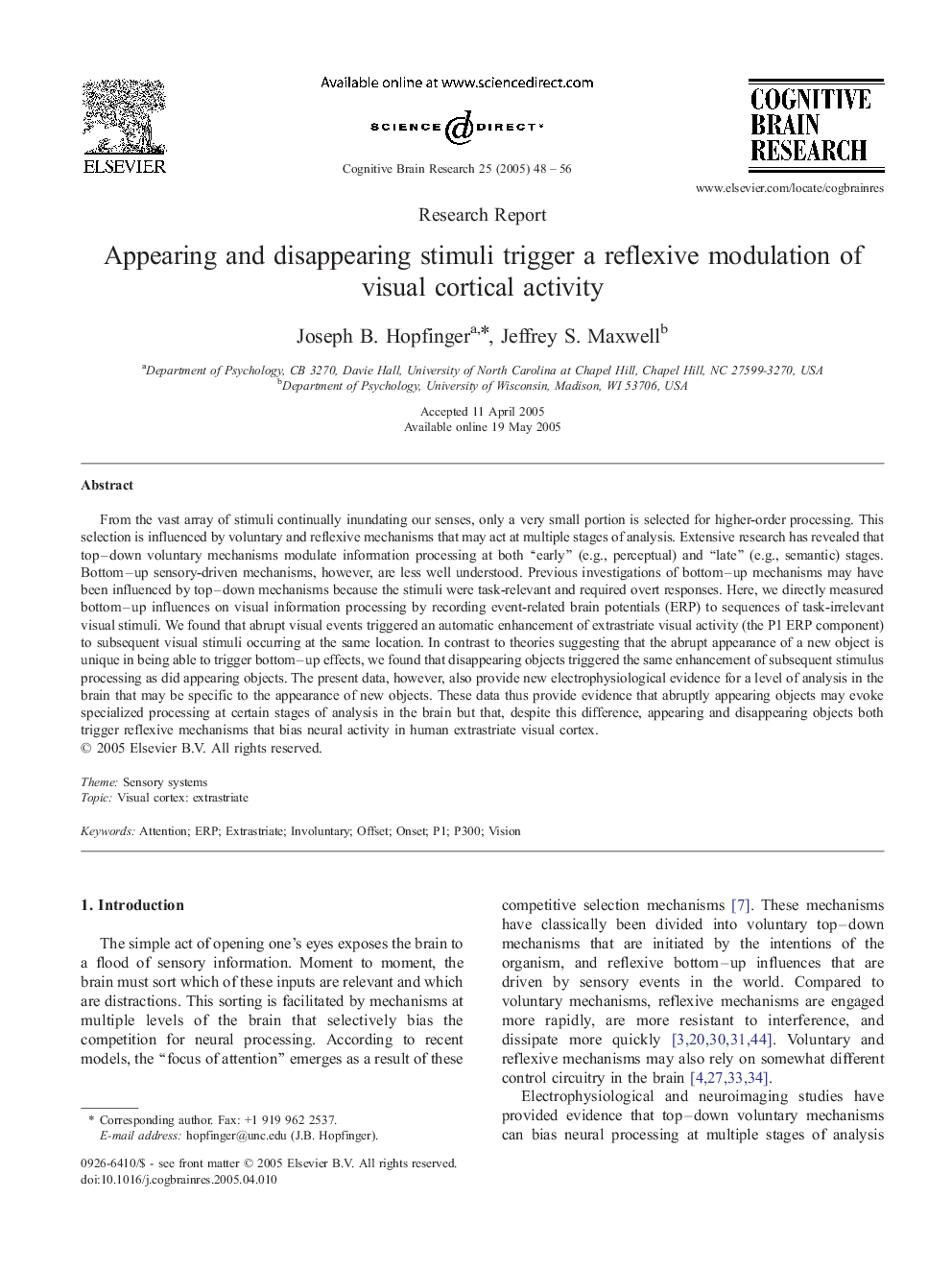| Article ID | Journal | Published Year | Pages | File Type |
|---|---|---|---|---|
| 9408053 | Cognitive Brain Research | 2005 | 9 Pages |
Abstract
From the vast array of stimuli continually inundating our senses, only a very small portion is selected for higher-order processing. This selection is influenced by voluntary and reflexive mechanisms that may act at multiple stages of analysis. Extensive research has revealed that top-down voluntary mechanisms modulate information processing at both “early” (e.g., perceptual) and “late” (e.g., semantic) stages. Bottom-up sensory-driven mechanisms, however, are less well understood. Previous investigations of bottom-up mechanisms may have been influenced by top-down mechanisms because the stimuli were task-relevant and required overt responses. Here, we directly measured bottom-up influences on visual information processing by recording event-related brain potentials (ERP) to sequences of task-irrelevant visual stimuli. We found that abrupt visual events triggered an automatic enhancement of extrastriate visual activity (the P1 ERP component) to subsequent visual stimuli occurring at the same location. In contrast to theories suggesting that the abrupt appearance of a new object is unique in being able to trigger bottom-up effects, we found that disappearing objects triggered the same enhancement of subsequent stimulus processing as did appearing objects. The present data, however, also provide new electrophysiological evidence for a level of analysis in the brain that may be specific to the appearance of new objects. These data thus provide evidence that abruptly appearing objects may evoke specialized processing at certain stages of analysis in the brain but that, despite this difference, appearing and disappearing objects both trigger reflexive mechanisms that bias neural activity in human extrastriate visual cortex.
Keywords
Related Topics
Life Sciences
Neuroscience
Behavioral Neuroscience
Authors
Joseph B. Hopfinger, Jeffrey S. Maxwell,
